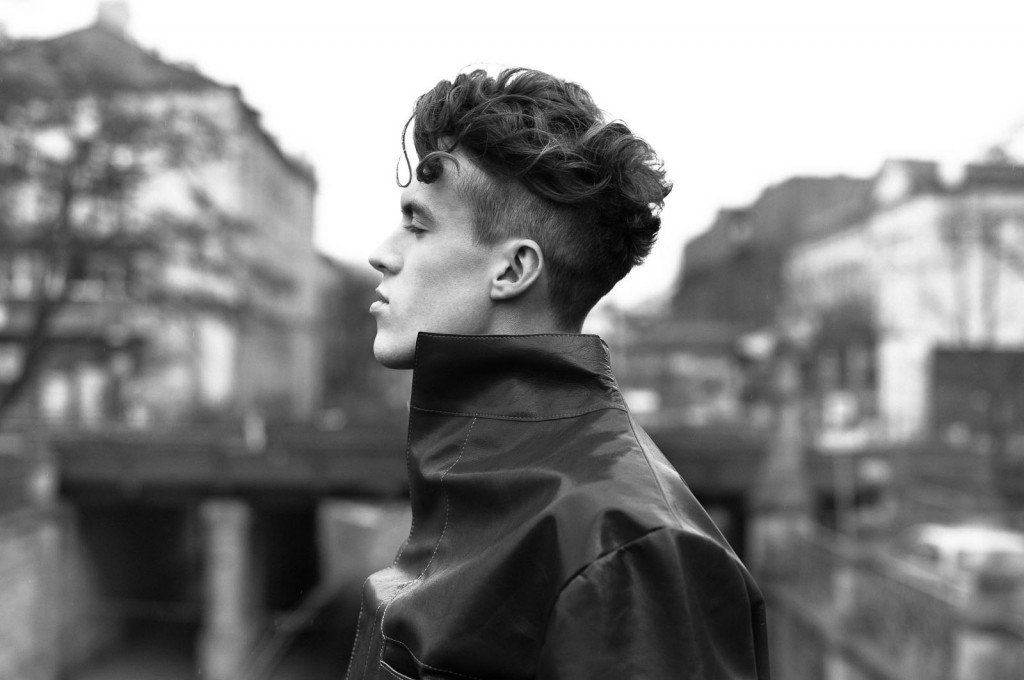
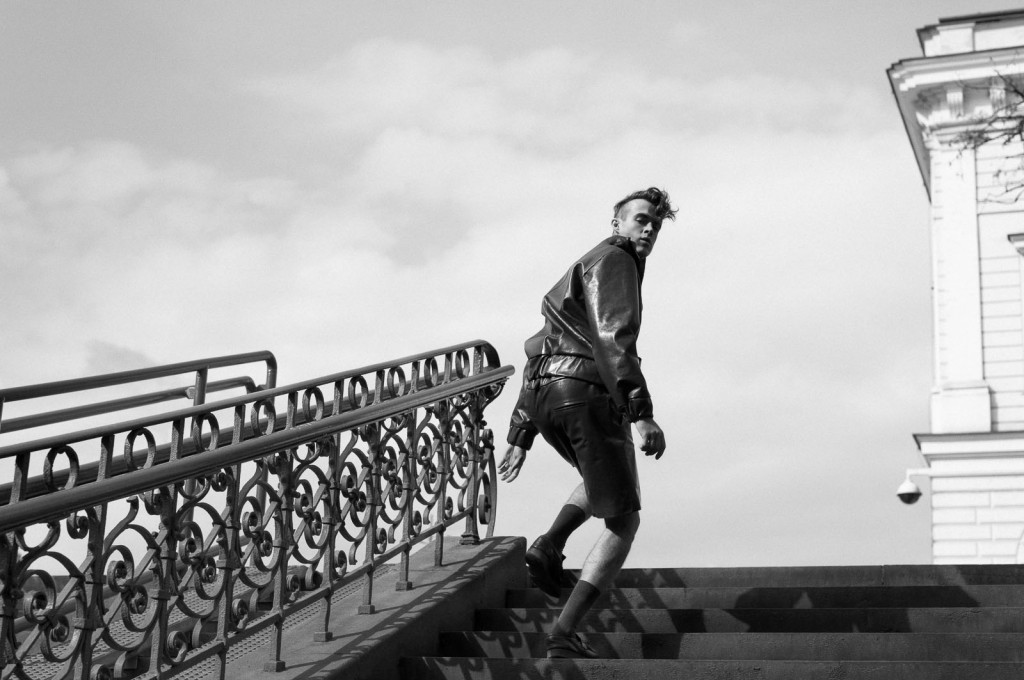
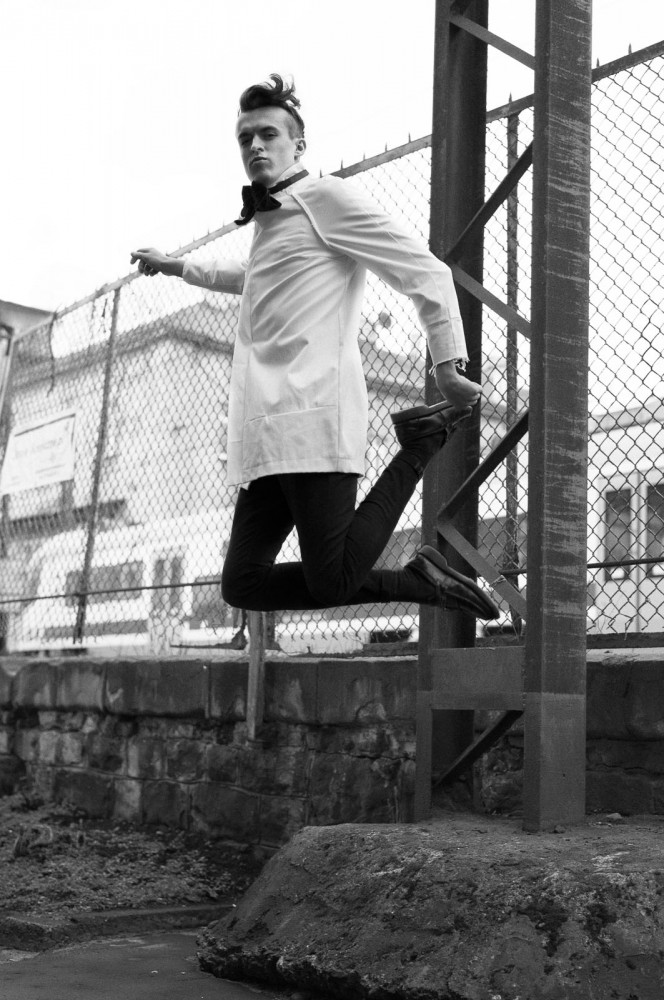
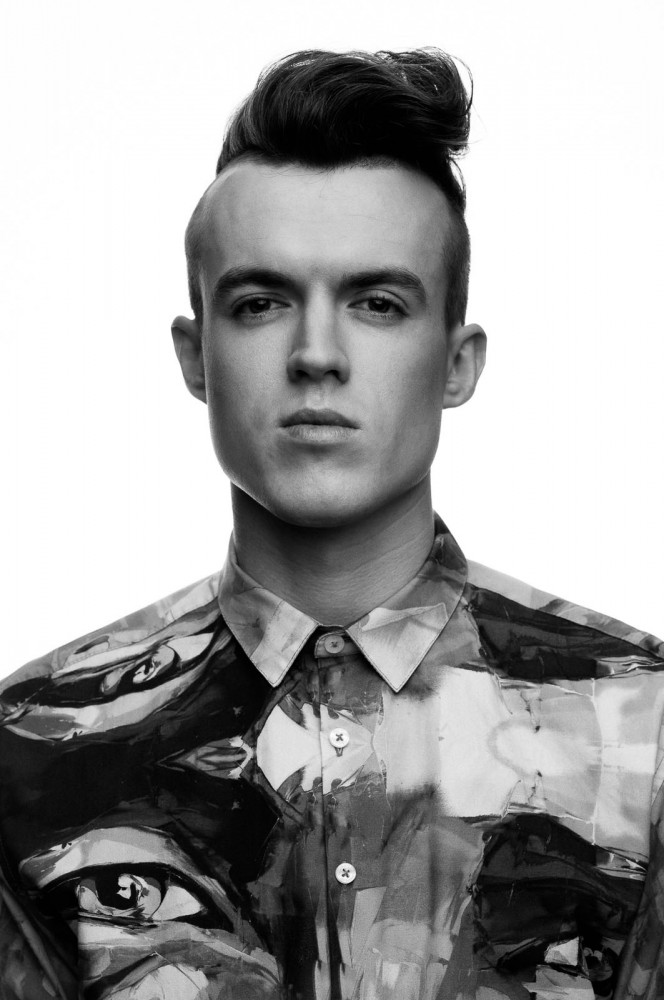
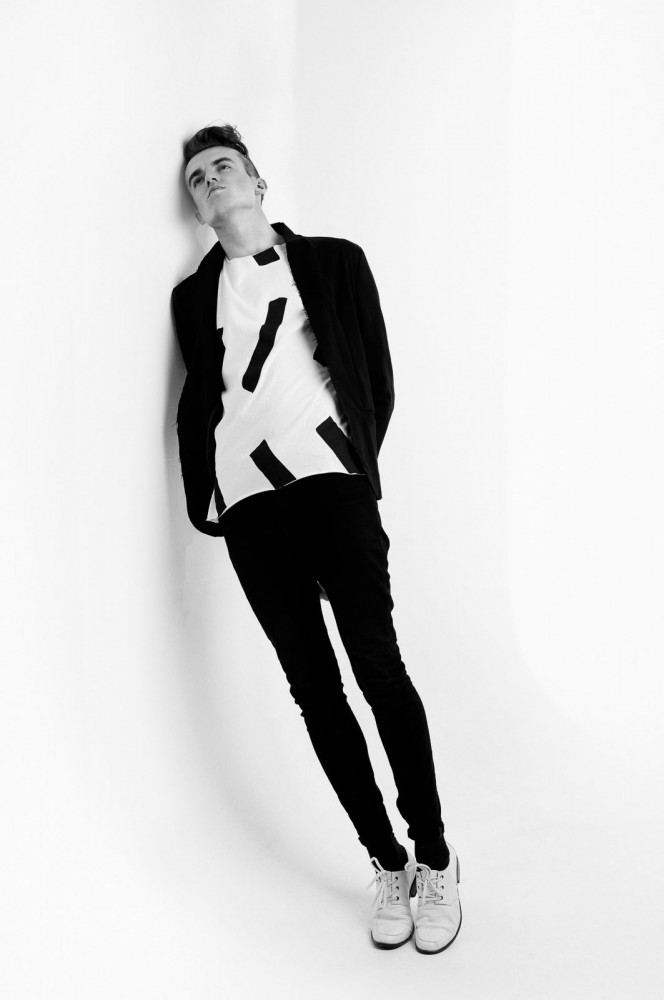
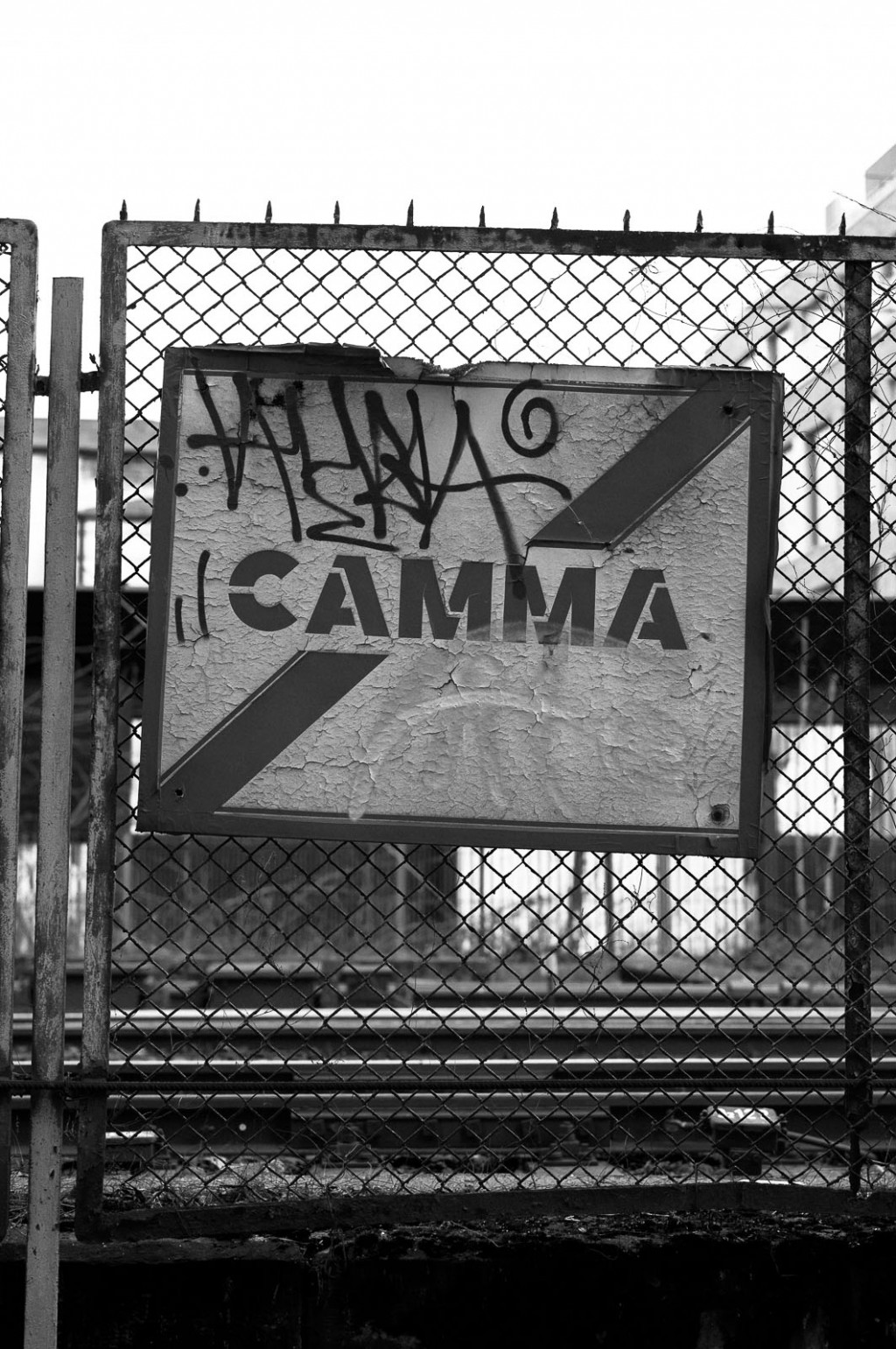
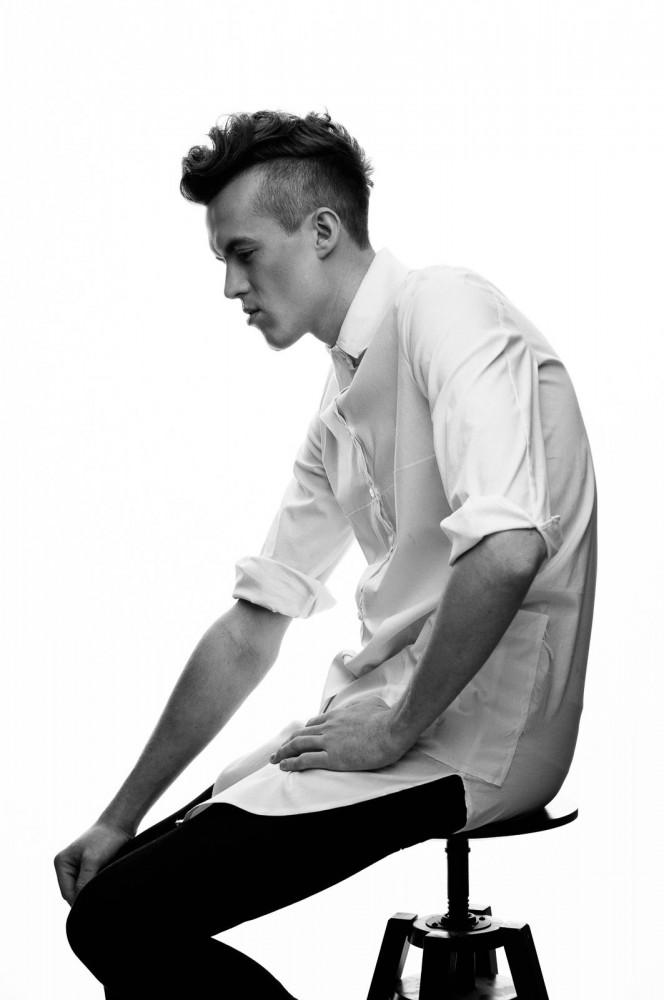
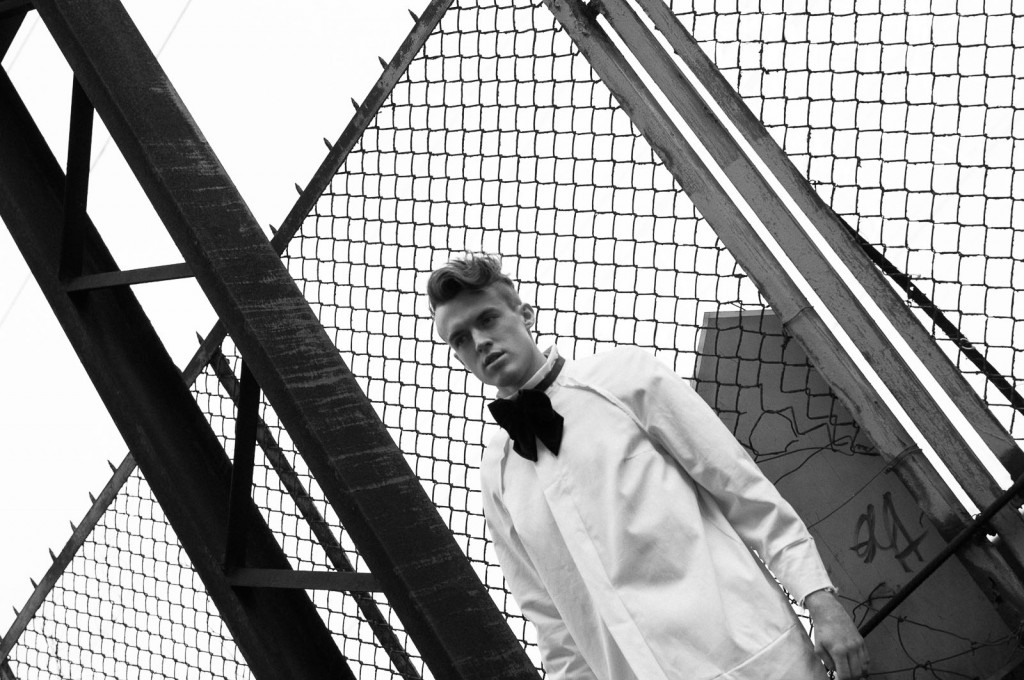
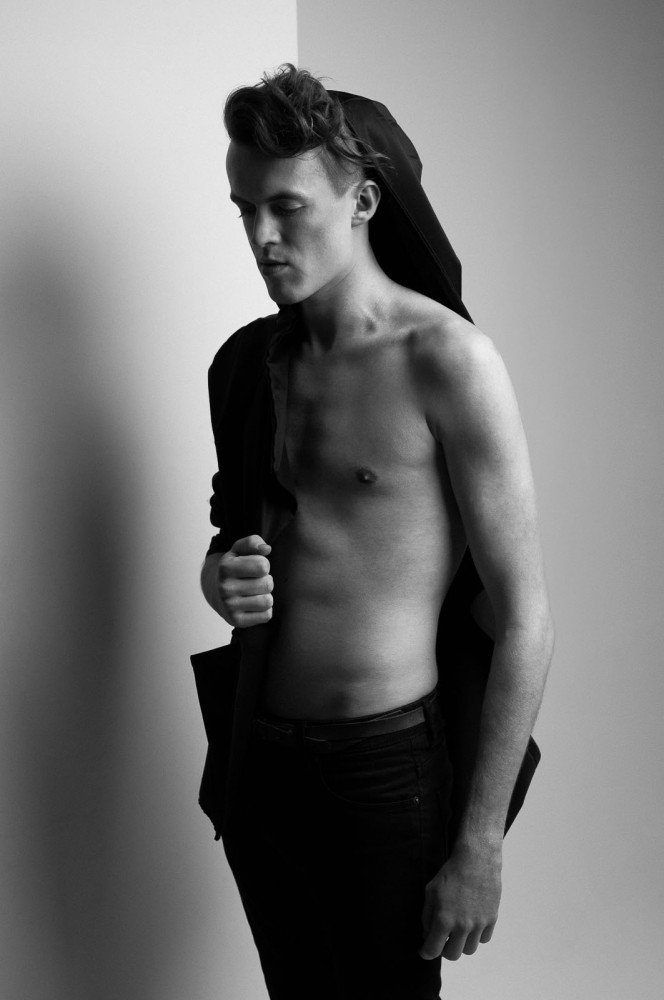
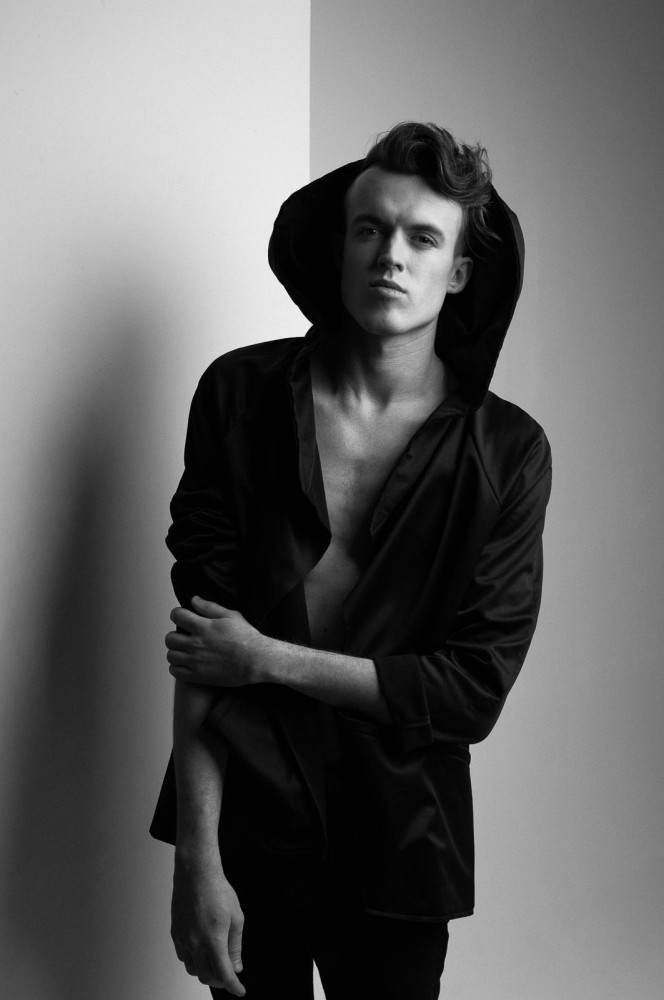
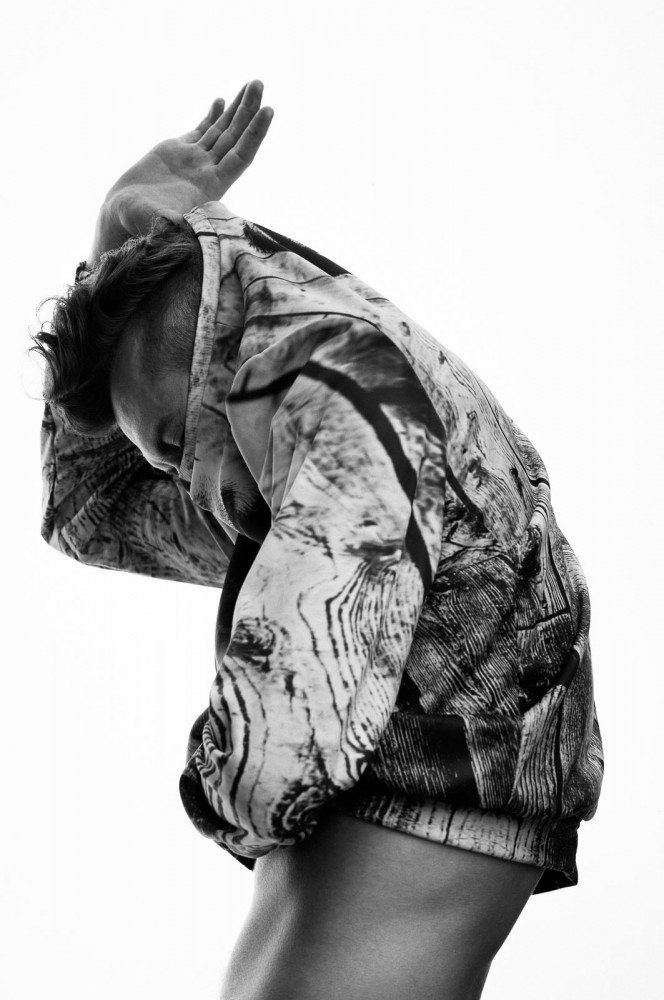
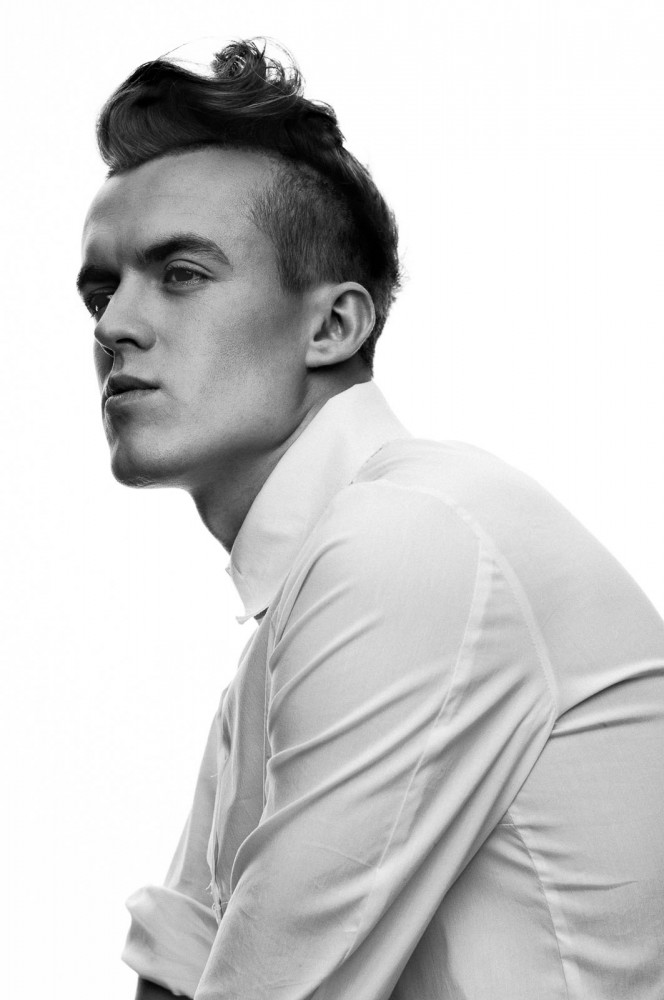














INTERVIEW
Michał Massa Mąsior

PHOTOGRAPHY Michał Massa Mąsior STYLING Gosia Kuniewicz HAIR Izabela Piwowarska MAKE-UP Paulina Tomasik MODEL Rostislav Tomylin @ Unique Agency Poland RETOUCHING Joanna Kordas CAMERA Leica S with Summarit-S 70mm f/2.5 Asph. (CS) and Summicron-S100mm f/2 Asph.
In “Boyhood” polish photographer Michał Massa Mąsior contrasts the youthful strength of male model Rostsislav Tomylin in an interesting dichotomy with his hometown Cracow, in which a strongly figurative tradition seemingly can’t keep pace with its own surprising metamorphoses.
You are at home in many photographic fields: fashion and commercial; but you also run workshops, have an interactive blog and write articles for Poland’s biggest photo blog, fotoblogia.pl. Is this necessary in order to get recognition as a pro in Poland, or why do you do it all?
Photography is a very broad field. It is incredibly difficult to be proficient in all of its aspects. On the other hand, there is always a risk of limiting your professional development, so I try to learn something new every day. In my blog I publish my commercial sessions and editorials, but also everyday photos as I’ve been inceasingly drawn to street photography lately. This is the aspect of my work which I am trying to focus on developing and I use the blog to fulfil this direction of interest. Photography in Poland still has some way to go to become a viable career and a full time job. The subject has come along in leaps and bounds in recent years, which gave me the idea of starting the beginners’ workshops – quite simply, there was sufficient demand to do so. It has helped me not only in a commercial sense: by teaching others I have found that I also learn and develop. Writing about photography is another facet of my constant development. It helps me expand my horizons but it also allows me to interact with like-mined people through their comments. This has the added advantage of raising my profile and, no doubt, unlocks potential for work. But I don’t specifically focus on getting wider recognition first and foremost, my involvement in all these streams of my work is a natural process.
You participated in a workshop yourself – our Bruce Gilden workshop. Where does your interest for this famous street photographer stem from? Does he have an influence on your commercial work?
I have come across Bruce Gilden relatively late ron. A friend shared a short clip of Bruce Gilden working in New York streets with me. That is when I started to explore his work and look for more information about him. Then, thanks to the LFI workshop, I had the chance to meet him in person, as well as a whole host of fantastic people, including yourselves. He struck me as not only a great artist but also a really good bloke. It turns out he has a connection with Krakow, which always helps.
Regarding his influence on my work – all exposure to people like Bruce Gilden has to have an impact, on both the artistic and personal level. There is a massive amount that can be learned from him, again both in terms of technique but also approach and heart. He lives and breathes photography.
What insights did you gain from the workshop?
Helmut Newton once said that a good fashion photo doesn’t look like one – it looks more like part of a story, a still from a film or a documentary. Coming to the workshop my goal was to incorporate street into fashion photography. Trouble is, having met Bruce Gilden I’ve now been swayed to street first and foremost. I now take my camera everywhere as I always want to be prepared for any good opportunity. Who knows, perhaps I can share something good soon.
You are residing of Cracow, a city full of tradition and an arty flair. How does this influence your style?
Cracow has incredible history, a great tradition in art and a great many artists. But it is also very dynamic and edgy. It tends to be known mostly for its wealth of pubs and bars (and dives) but it is quickly becoming a European leader in the technology industry. It is increasingly associated with fashion too. Yes, when I think inspiration in fashion photography I think NY, Milan, London or Paris, but Cracow is still a phenomenal place to photograph fashion. Thanks to the International School of Art and Fashion Design we have a growing number of really exciting designers and artists with whom I have had a chance to work.
Which of the great photographers has influenced you the most? How does this reflect on your work?
I can’t say my inspirations are very unique. There is not enough room here to mention all my favourites but Helmut Newton, Richard Avendon, Jeanloup Sieff and Peter Lindbergh have been elementary for me. Annie Leibovitz too, as a master of simple associations. Patrick Demachelier for the sheer emotion. And… I could go on and on and on. On the other hand, I have found huge appreciation too for documentarists like Doisneau, Cartier-Bresson and Eggleston. I need to stop right here or I’ll keep going for hours
You shot ‘Boyhood’for the S Magazine. What’s it about?
It’s a simple story. I saw Rostislav at a casting. His presence caught my eye immediately. He doesn’t seem to pose at all, he can just stand there and he already looks incredible. At the same time I felt like he emanated youth. There is definitely more regard for youth than maturity nowadays, with many people wanting to appear and act younger than they are. Thus, I tried to capture Rostislav as a man forever young, a boy almost.
You procured a Leica S006 with a 100 Lense. Did this have an impact on your photography?
I’ve worked with a different medium format camera before and I liked it well enough. I was still a little afraid of the change. The Leica S is not just a great camera, it’s a feel-good object to hold in your hand. It feels solid, has a very user-friendly interface, is ergonomically superb and as small as a classic DSLR. The most outstanding feature has to be the lenses, though. The lenses are peerless. The focus is incredibly sharp in places with the entire photograph still maintaining the overall softness and delicacy. This is what drew my eye in the S Magazine photos. After an initial few shoots, I noticed that the lens also gives the photographs something more, something intangible. This is why I often use it just for fun, even outside of commercial work. The Leica S wants to be used.
Which lens in the Leica S series is your favourite?
I’ve only worked with Summicron-S 100mm f/2 Asph., Summarit-S 70mm f/2.5 Asph. (CS) and Summarit-S 35mm f/2.5 Asph. They are all brilliant, no weaknesses in my opinion. Summarit-S 70mm f/2.5 Asph. (CS) is my favorite allrounder not only because of the length, but also the central shutter, which is very helpful for dynamic studio shots.
What are your visual goals, a vision perhaps, that you’d like to achieve?
My dream is to work in as many diverse places around the world as possible, to see as much of the world through my lens as possible. I love meeting people and taking their photographs. Of course, I would also love to work with the heavyweights of the photography world, but the most important thing for me is to keep learning and developing. I hope I will never stop learning, that is my dream.